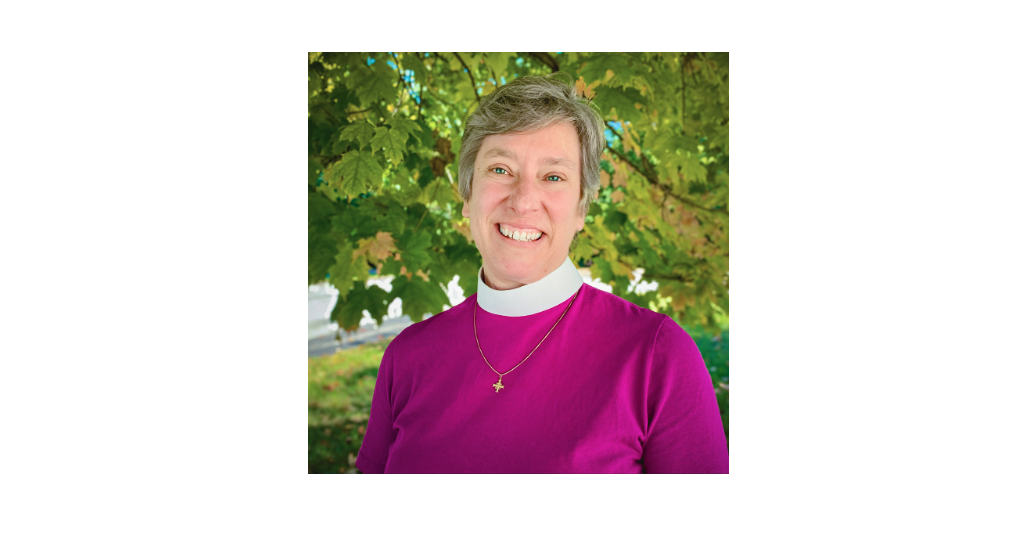
I was heading north after a wonderful visit to Christ Church, Hornell, and lunch with the Rev. Shanna Hawks. I was going slightly out of my way to pick up an antique (?!?) vase, perfect for the niche in our new stairway, that John had found on Facebook marketplace. I wound my way through Naples when suddenly before me opened a great valley, and what I now know to be the West River and the south end of Canandaigua Lake. Wow! Still new to the geography of the diocese, I had visited some places along the lake but had never approached if from the south. What a beautiful surprise! The valley was lush and green and the river sparkled in the mid-summer sun, like a bejeweled chain dropping from a many-faceted gem.
Driving along the ridge of the valley I mused about how the lake and river were formed.[1] What happened in the ice age that molded the hills? I wonder if the river had once been much wider, the valley filled with water. My thoughts meandered like the river, back to the conversation with the vestry at Christ Church, and to several meetings I had with other vestries. When I ask what isn’t going well, I often get the same responses, “I wish we had more children in the pews” and “That used to be the youth room” and “We worry about the survival of the community, we are getting old.” I realize our church is a bit like that small river in the huge valley. We are still flowing, strong, and faithful; we respond to the changes in our surroundings, we adapt, and we continue to nurture the faithful. Yet our buildings, like that valley, seem too big for us, the sanctuary has more open seats than filled ones, the Sunday school rooms are unused, and our budgets for buildings and grounds dwarf the funds for ministry. As I have traveled the diocese from summer chapels to downtown neo-gothic structures, to mid-century modern suburban churches, and have met the communities that worship in them I see this contrast. How are we called to serve the world (the large community around us) with a diminishing number of leaders? Or as Jesus said “The harvest is plentiful, but the laborers are few; therefore ask the Lord of the harvest to send out laborers into his harvest.” (Luke 10:2)
I remember being struck by the images that your discernment team used in the diocesan profile for the bishop search. There were at least two pictures of scaffolding, along with all the beautiful pictures of smiling Episcopalians, festive worship, welcoming church buildings, and gorgeous scenery. Scaffolding was a theme in the writing also; the diocese was healing and a work in progress, a diocese deeply faithful and yearning to be a stronger support for local parishes in a changing culture. As I have navigated the various committees, boards, and meetings, to plan meetings, this scaffolding comes to mind – we have a massive structure supporting a small but mighty community. Sometimes it feels like we spend as much time maintaining the scaffolding as we do engaging in the work that needs to be done.
We are not alone in being a diocese whose structure was created for the church during the baby boom. And, like many, the size of the staff has been slowly reduced over time. However, the workload has not necessarily followed suit and so staff and volunteers have had to pick up a wider scope of work and wear many hats to manage the structure of the institution. I have been acutely aware of this as I have considered staff restructuring for 2025. We are adding fewer staff than we are losing in retirements, and yet there are many new resources I would like our staff to have available for you. The system of districts and deans is similar; created with 60 churches divided evenly into 5 districts; now we are 43. The proposal to experiment with a smaller structure of 3 convocations is an attempt to trim the scaffolding and the demand upon volunteer leadership and free us up for a deeper investment in ministry.
I don’t have simple answers for our aging congregations in out-sized buildings. I can say that in every parish I visit I find strong, faithful, and caring communities doing amazing and gospel-drive work. I don’t know what institutional things we need to let go of in order to do the work God has given us to do. I do know that if we keep our eyes on the call of Christ we will know what to prune and what to keep. I want us to modify and maintain our scaffolding but keep our focus and attention on the river. I keep in mind the ages it took for nature to form our beautiful rivers, lakes, and hills, meanwhile providing life for us and all living things. We are called to be like a river, providing nourishment for a community of ever-changing boundaries and challenges. We cannot do that without trust and each other. I trust that God has called each of us uniquely and as one. We are a many-faceted jewel, beloved by God, and together can answer God’s call to change and build with new scaffolding.
[1] I am not a geologist, so please excuse any gross errors in my metaphor!
